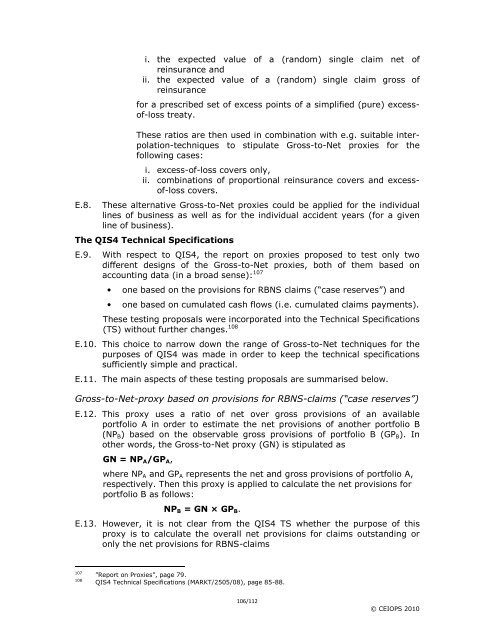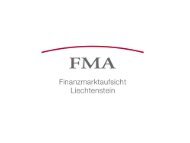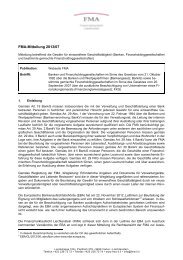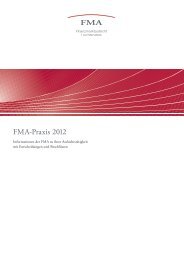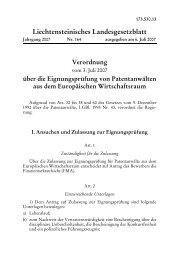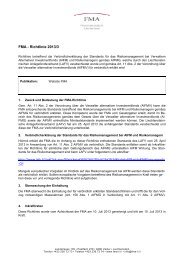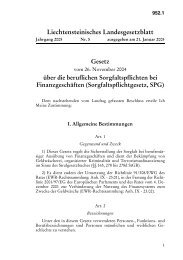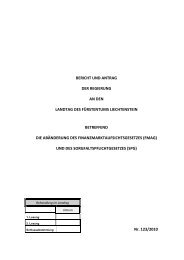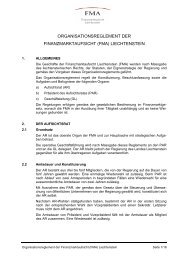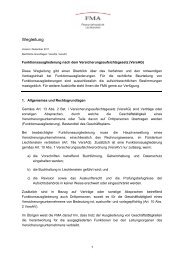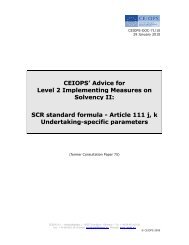CEIOPS' Advice for Level 2 Implementing ... - EIOPA - Europa
CEIOPS' Advice for Level 2 Implementing ... - EIOPA - Europa
CEIOPS' Advice for Level 2 Implementing ... - EIOPA - Europa
Create successful ePaper yourself
Turn your PDF publications into a flip-book with our unique Google optimized e-Paper software.
i. the expected value of a (random) single claim net of<br />
reinsurance and<br />
ii. the expected value of a (random) single claim gross of<br />
reinsurance<br />
<strong>for</strong> a prescribed set of excess points of a simplified (pure) excessof-loss<br />
treaty.<br />
These ratios are then used in combination with e.g. suitable interpolation-techniques<br />
to stipulate Gross-to-Net proxies <strong>for</strong> the<br />
following cases:<br />
i. excess-of-loss covers only,<br />
ii. combinations of proportional reinsurance covers and excessof-loss<br />
covers.<br />
E.8. These alternative Gross-to-Net proxies could be applied <strong>for</strong> the individual<br />
lines of business as well as <strong>for</strong> the individual accident years (<strong>for</strong> a given<br />
line of business).<br />
The QIS4 Technical Specifications<br />
E.9. With respect to QIS4, the report on proxies proposed to test only two<br />
different designs of the Gross-to-Net proxies, both of them based on<br />
accounting data (in a broad sense): 107<br />
• one based on the provisions <strong>for</strong> RBNS claims (“case reserves”) and<br />
• one based on cumulated cash flows (i.e. cumulated claims payments).<br />
These testing proposals were incorporated into the Technical Specifications<br />
(TS) without further changes. 108<br />
E.10. This choice to narrow down the range of Gross-to-Net techniques <strong>for</strong> the<br />
purposes of QIS4 was made in order to keep the technical specifications<br />
sufficiently simple and practical.<br />
E.11. The main aspects of these testing proposals are summarised below.<br />
Gross-to-Net-proxy based on provisions <strong>for</strong> RBNS-claims (“case reserves”)<br />
E.12. This proxy uses a ratio of net over gross provisions of an available<br />
portfolio A in order to estimate the net provisions of another portfolio B<br />
(NPB) based on the observable gross provisions of portfolio B (GPB). In<br />
other words, the Gross-to-Net proxy (GN) is stipulated as<br />
GN = NPA/GPA,<br />
where NPA and GPA represents the net and gross provisions of portfolio A,<br />
respectively. Then this proxy is applied to calculate the net provisions <strong>for</strong><br />
portfolio B as follows:<br />
NPB = GN × GPB.<br />
E.13. However, it is not clear from the QIS4 TS whether the purpose of this<br />
proxy is to calculate the overall net provisions <strong>for</strong> claims outstanding or<br />
only the net provisions <strong>for</strong> RBNS-claims<br />
107 ”Report on Proxies”, page 79.<br />
108 QIS4 Technical Specifications (MARKT/2505/08), page 85-88.<br />
106/112<br />
© CEIOPS 2010


